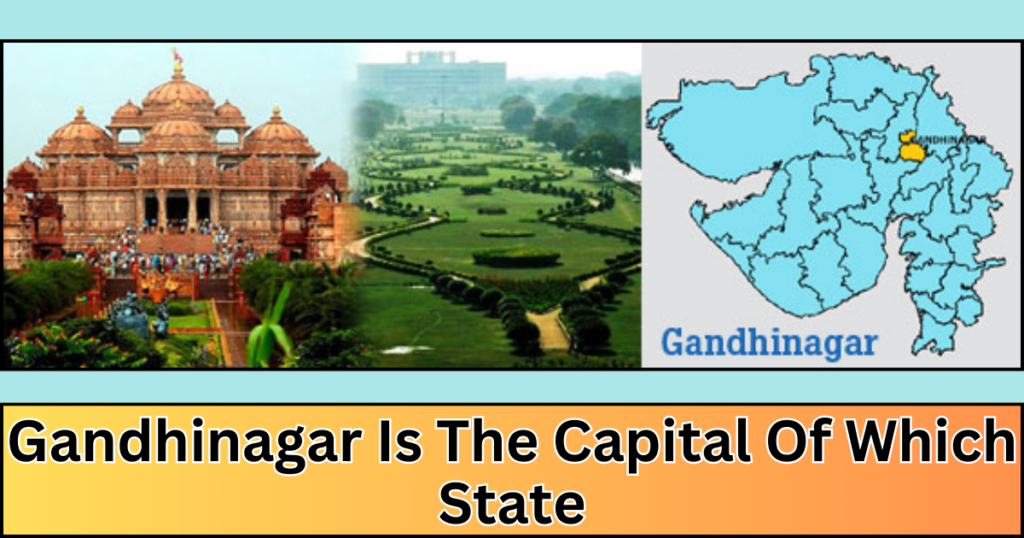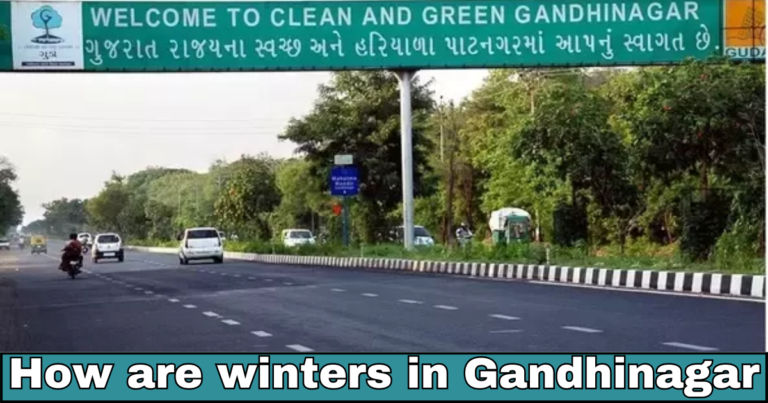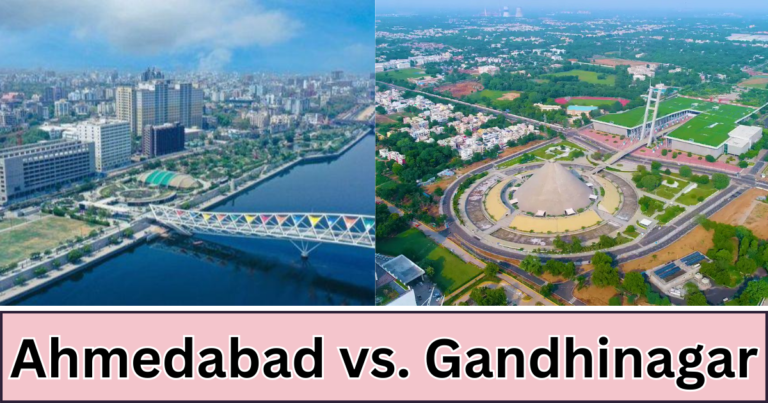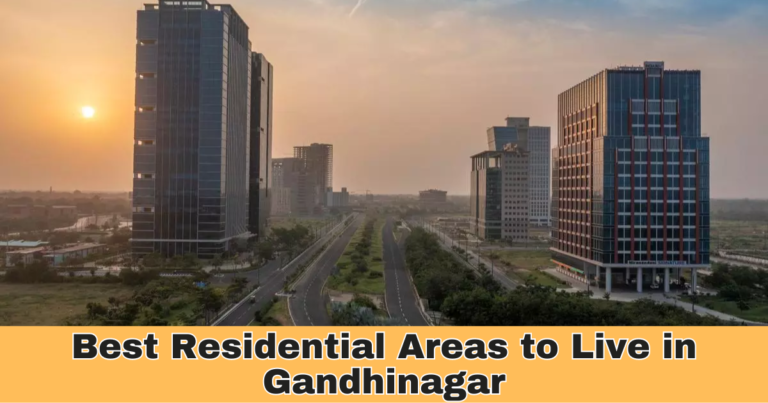gandhinagar is the capital of which state:-Gandhinagar, The Vibrant Heart of a Distinctive State
gandhinagar is the capital of which state :- Hello, dear readers! Today, we’re diving into the colorful tapestry of Gandhinagar, the city that wears the crown as the capital. But wait, we’re not just exploring its vibrant streets and lively neighborhoods; we’re uncovering the state to which this dynamic city belongs. So, buckle up for an adventure as we unfold the pages of history, culture, and administrative prowess that make Gandhinagar truly special.
Gandhinagar is a planned city in the western Indian state of Gujarat. The Akshardham is a massive Hindu temple with ornate carvings and sculpted pillars, plus a water show in its sprawling gardens. Dandi Kutir museum traces the life of leader Mahatma Gandhi, who was born in Gujarat. South, along the Sabarmati River, the Indroda Nature Park has a zoo and botanical gardens, plus an adjacent dinosaur and fossil park.

Gandhinagar, the Gujarat’s Capital
- Location: Gandhinagar graces the west bank of the Sabarmati river, creating a serene backdrop for its residents.
- Akshardham Temple: Among its many jewels, the Akshardham temple shines brightly. This magnificent wonder is an evident to the city’s rich cultural heritage.
- Strategic Location: Gandhinagar holds a strategic position, lying at the west-central point of the industrial corridor connecting Mumbai, India’s financial capital and Delhi, the national capital.
- Masterful Planning: The city of Gandhinagar owes its well-planned layout to the visionaries Prakash M. Apte and H.K. Mewada, who had the privilege of working under the legendary Le Corbusier, the visionary behind the city of Chandigarh.
- Demographic Diversity: With a population comprising 53% males and 47% females, Gandhinagar embodies a harmonious blend of genders.
- Tree Capital of India: Gandhinagar has earned the moniker of the “tree capital of India” due to its impressive green cover, with 54% of its land area adorned with lush vegetation.
- Accessibility: The city is well-connected, with the Sardar Vallabhbhai Patel International Airport in Ahmedabad serving as the closest major international gateway.
Gandhinagar – A Brief Overview
- Gandhinagar lies on the west bank of the Sabarmati river.
- The very famous Akshardham temple is located in Gandhinagar.
- Gandhinagar is located at the west-central point of the Industrial corridor between Mumbai, the financial capital of India, and Delhi, the national capital of India.
- Gandhinagar city was planned by Prakash M. Apte and H. K. Mewada. These two had apprenticed under Le Corbusier, the man who had planned the city of Chandigarh.
- Males constitute 53% of the population of Gandhinagar.
- Females constitute 47% of the population of Gandhinagar.
- Gandhinagar is known as the tree capital of India. 54% of Gandhinagar’s land area has a green cover.
- The closest major international airport is Sardar Vallabhbhai Patel International Airport is located in Ahmedabad.

Background of Gandhinagar: Where History Meets Modernity
Let’s rewind the clock and take a stroll down memory lane to the founding days of Gandhinagar. Established with a vision to be more than just a city, Gandhinagar emerged as a testament to progress and innovation. Its historical roots run deep, intertwining with the spirit of modernity. Picture this – a city being born not just as a geographical entity but as a symbol of resilience and growth. Gandhinagar didn’t just happen; it was crafted, molded, and nurtured to become the bustling capital we know today.
Establishment of the State: The Birth of a Unique Identity
Now that we’ve set the stage for Gandhinagar, let’s zoom out a bit and explore the state it proudly represents. The formation of this state wasn’t a mere administrative decision; it was a journey fueled by historical events and regional aspirations. Gandhinagar doesn’t stand alone; it stands as the heartbeat of a state with its unique identity and cultural tapestry. The narrative extends beyond the city limits, encompassing the very essence of the state that calls Gandhinagar its capital.
Administrative Role: A Hub of Governance and Decision-Making
Gandhinagar isn’t just about architectural marvels and bustling markets; it’s a hub of governance and administrative brilliance. The centralized decision-making processes echo through its wide avenues and well-planned sectors. The administrative functions don’t just define the city; they shape the destiny of the state. Gandhinagar is more than brick and mortar; it’s the nerve center where policies are born, decisions are made, and the future is envisioned.
Historical and Cultural Significance: Beyond the Surface
Now, let’s add a splash of color to our exploration – the cultural and historical significance of Gandhinagar. It’s not just a capital city; it’s a living canvas that tells tales of cultural heritage and landmarks. As you wander through the streets, you’ll find more than just buildings; you’ll discover symbols that resonate with the identity of the state. Gandhinagar becomes a symbol, a proud emblem of the history, culture, and traditions that define the region it represents.
Geographical Location: Where Nature Meets Urbanity
Gandhinagar isn’t just a dot on the map; it’s strategically positioned, weaving itself into the geographical fabric of the state. Its location isn’t a random choice; it’s a deliberate placement with advantages that go beyond the surface. Picture a city nestled amidst nature, offering both urban amenities and the serenity of the surrounding landscapes. Gandhinagar isn’t just a destination; it’s a geographical masterpiece that complements the state’s diverse terrain.
Economic and Industrial Aspects: Powering the State’s Growth
Let’s shift our focus to the economic pulse of Gandhinagar. It’s not just a capital city; it’s an economic powerhouse driving the growth of the state. Industries flourish, businesses thrive, and economic contributions ripple through its vibrant streets. Gandhinagar’s industrial landscape isn’t just about factories and enterprises; it’s a story of economic resilience and progress that echoes through the corridors of the state.
Public Services and Facilities: Nurturing Growth and Well-Being
As we navigate through the city’s charm, we can’t overlook the pillars that support its residents – the public services and facilities. Gandhinagar isn’t just a place to live; it’s a haven with educational institutions that nurture young minds, healthcare facilities that prioritize well-being, and transportation networks that connect communities. It’s a holistic approach to city planning that goes beyond bricks and mortar, focusing on the quality of life for its residents.
Conclusion: Gandhinagar’s Multifaceted Significance
And there you have it, our delightful exploration of Gandhinagar, the vibrant capital city that weaves seamlessly into the tapestry of its affiliated state. Gandhinagar is more than a capital; it’s a celebration of history, culture, and progress. As we wrap up our journey, let’s salute this city’s multifaceted significance – a hub of governance, a cultural emblem, an economic powerhouse, and a geographical marvel. Until next time, keep shining, Gandhinagar!
FAQ
Which state capital is Gandhinagar?
Gandhinagar is the capital of the state of Gujarat in India. Gandhinagar is located approximately 23 km north of Ahmedabad, on the west central point of the industrial corridor between the metropolitan cities of Delhi and Mumbai.
Which is the capital city of Ahmedabad?
Ahmedabad was the capital of Gujarat from 1960 to 1970, after that the capital of Gujarat changed to Gandhinagar. Now the capital of Gujarat is Gandhinagar. Gandhinagar lies on the west bank of the Sabarmati River.
What is the old name of Gandhinagar?
Phase 1: After the city’s infrastructure was completed in 1970, and until 1980, it was known as ‘Gandhian City,’ since it was based on Gandhi’s concepts and principles. Phase 2: Between 1980 and 1990, a time of low pollution, it was known as ‘Unpolluted City’.
Why is Gandhinagar capital of Gujarat?
Gandhinagar was chosen as the capital of Gujarat for a variety of reasons. Firstly, it is located in the center of Gujarat and provides easy access to all parts of the state. Secondly, Gandhinagar has excellent infrastructure and facilities that make it an ideal choice for a capital city.
Why Gandhinagar is called Green City?
This city is a place to a large variety of trees that are planted across the roads and in gardens. Banyan trees, Ashoka trees, and Eucalyptus trees are planted along the roadside used as a boundary line. After Chandigarh, Gandhinagar is known as the Green city of India.

I’m a professional content writer. I have experience of 5+ years in copywriting & content Writing.






